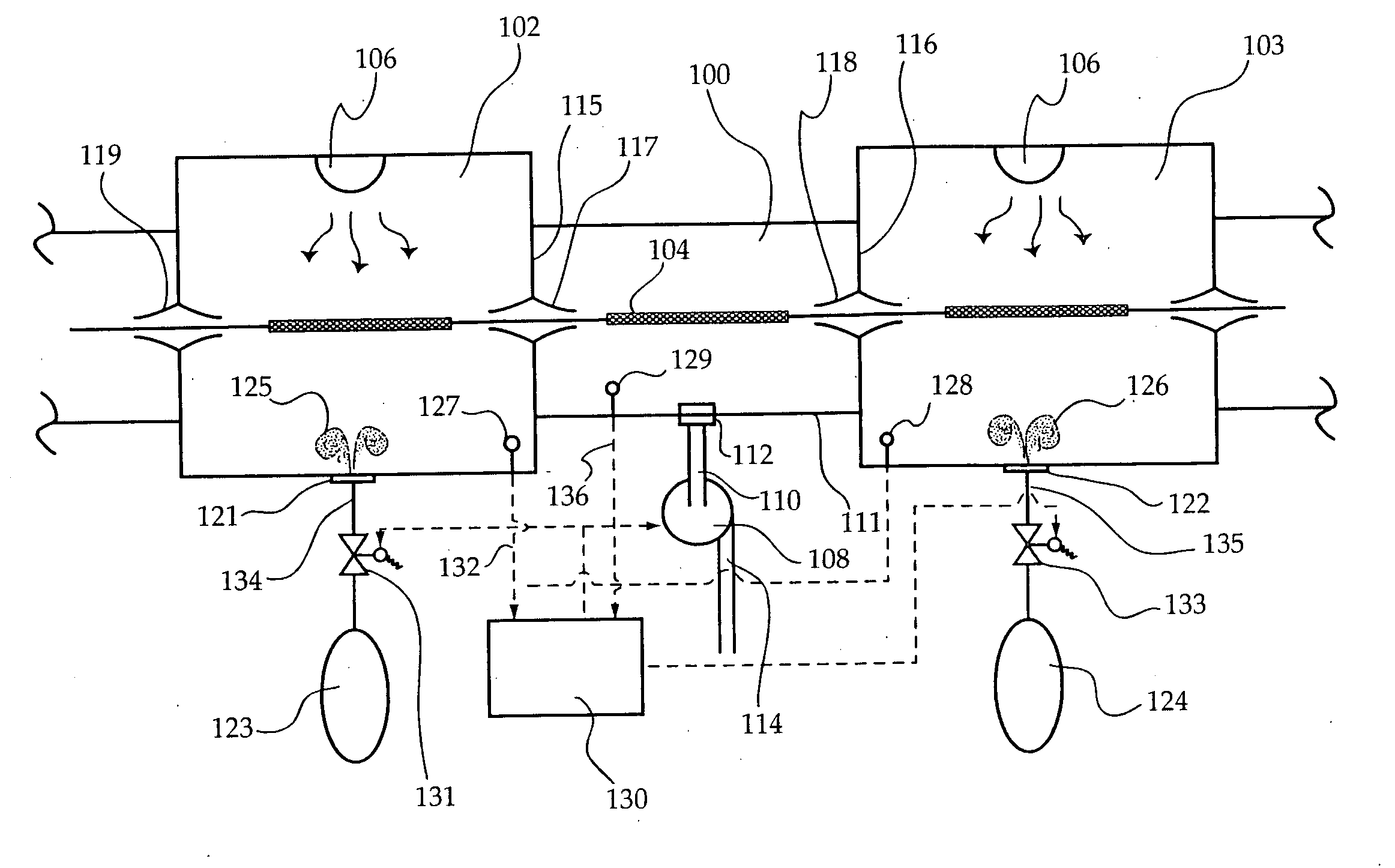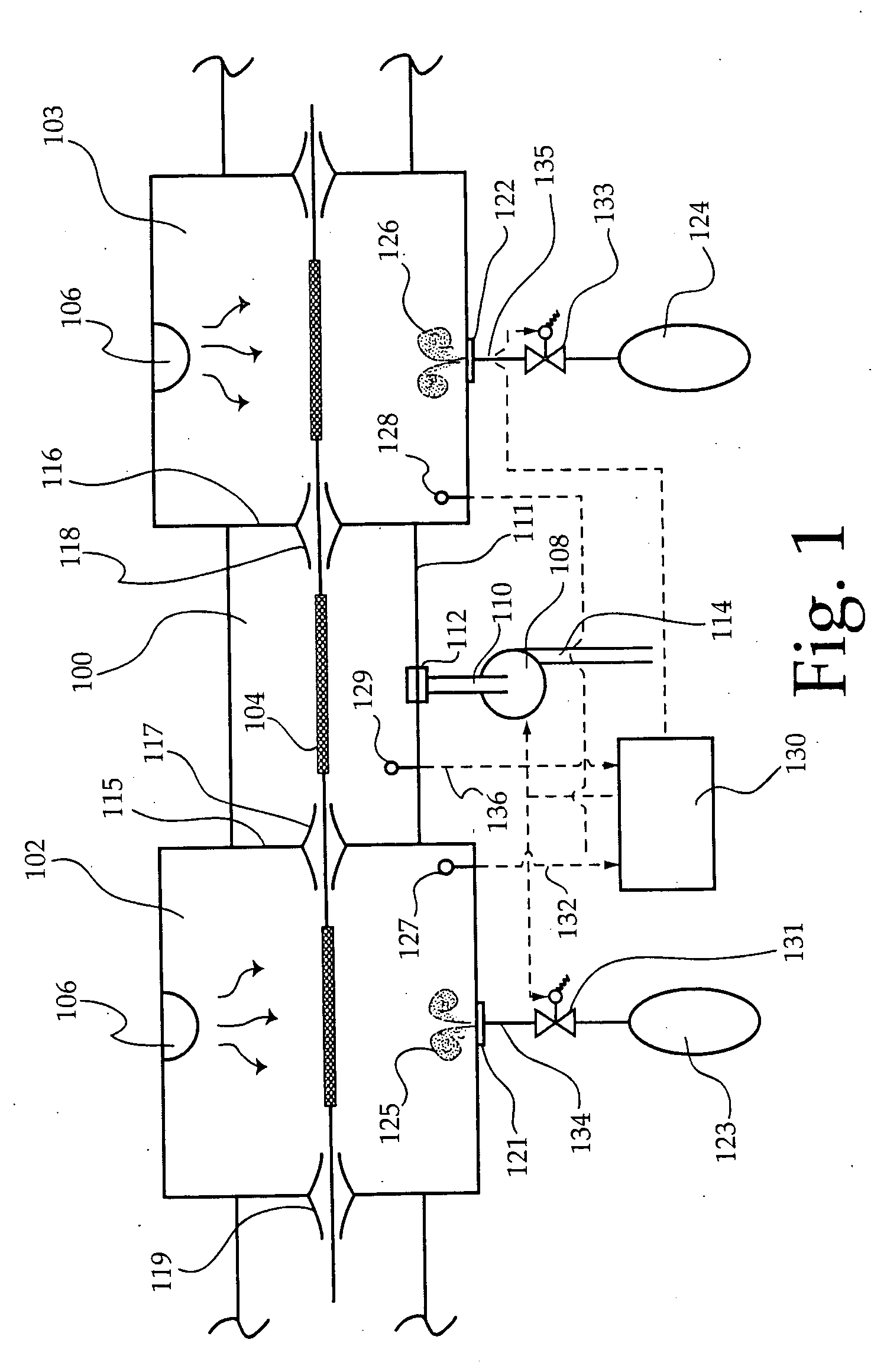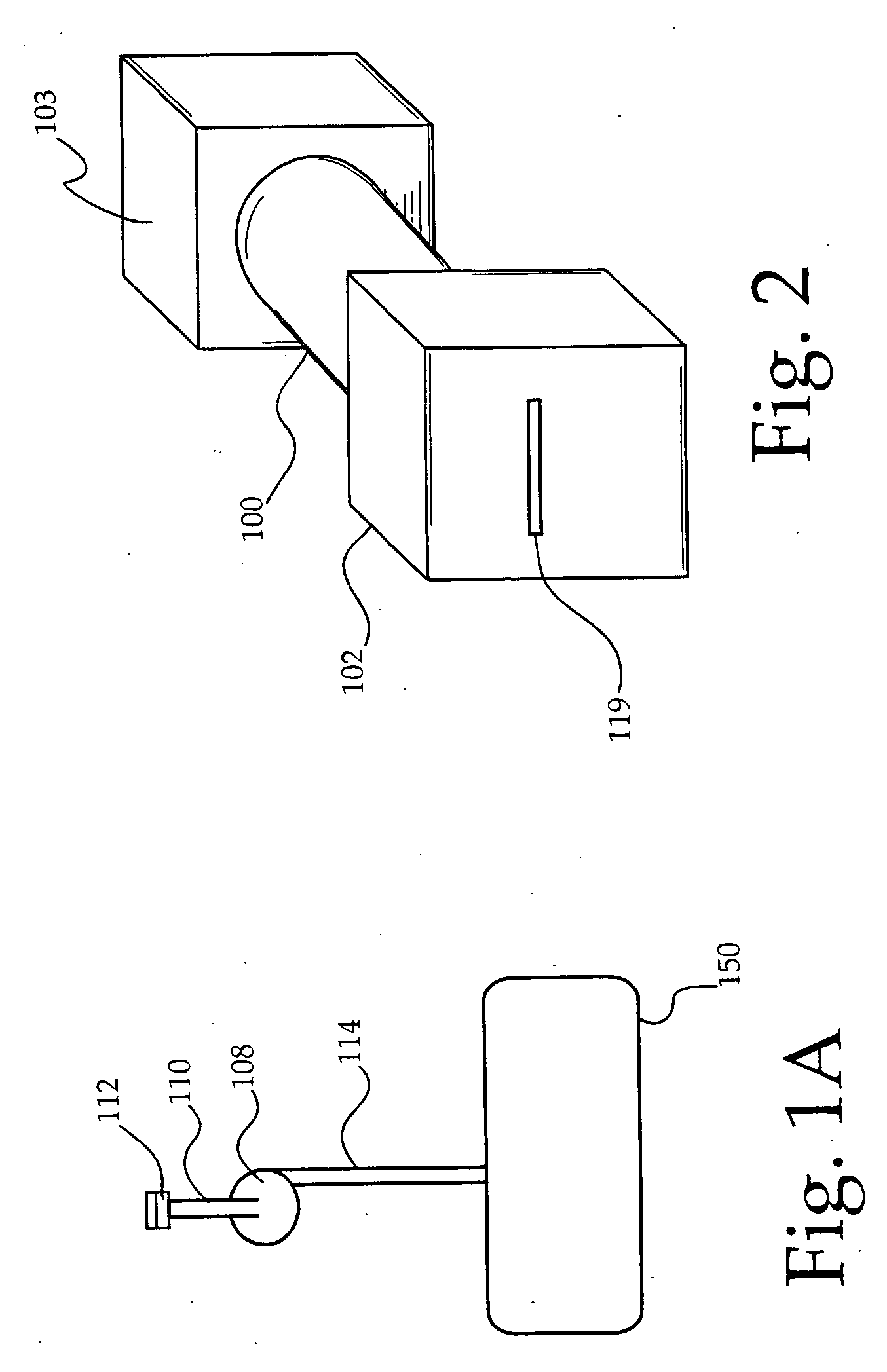Pressure control system in a photovoltaic substrate deposition apparatus
a technology of pressure control system and photovoltaic substrate, which is applied in the direction of sustainable manufacturing/processing, final product manufacturing, vacuum evaporation coating, etc., can solve the problems of insufficient reduction of product cost, difficult expansion of process to a commercial scale, and efficient thin-film manufacturing process
- Summary
- Abstract
- Description
- Claims
- Application Information
AI Technical Summary
Benefits of technology
Problems solved by technology
Method used
Image
Examples
Embodiment Construction
[0028] An embodiment of the current invention is depicted in FIG. 1 and comprises an enclosed isolation zone 100 that is attached to at least one reaction chamber 102 but, in most cases, the enclosed isolation zone 100 is attached between two reaction chambers 102. The physical shape of the isolation zone 100 may be any shape, such as cube or rectangular, and may be determined by the size of the pallet, work piece, or other substrate transportation device 104. Obviously, the shape of the isolation zone 100 may be driven by optimizing performance in a vacuum, therefore a cylindrical, as depicted in FIG. 2, or spherical shape may be necessary to support drawing a vacuum in the area of 10−7 torr. The size of the enclosed isolation zone 100 may also be determined by the reaction requirements of the photovoltaic production process. Factors which may influence the length of the isolation zone 100, for example, may be issues such as internal pressure of adjacent reaction chambers, residenc...
PUM
| Property | Measurement | Unit |
|---|---|---|
| pressure | aaaaa | aaaaa |
| pressures | aaaaa | aaaaa |
| pressure | aaaaa | aaaaa |
Abstract
Description
Claims
Application Information
 Login to View More
Login to View More - R&D
- Intellectual Property
- Life Sciences
- Materials
- Tech Scout
- Unparalleled Data Quality
- Higher Quality Content
- 60% Fewer Hallucinations
Browse by: Latest US Patents, China's latest patents, Technical Efficacy Thesaurus, Application Domain, Technology Topic, Popular Technical Reports.
© 2025 PatSnap. All rights reserved.Legal|Privacy policy|Modern Slavery Act Transparency Statement|Sitemap|About US| Contact US: help@patsnap.com



